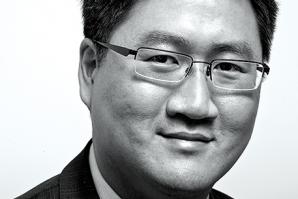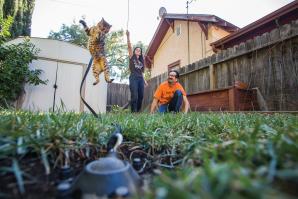I have been working on developing a new piece of light industrial equipment for several years but had trouble with a certain aspect of it. I mentioned it to a trusted colleague, who had a great idea that I was able to use to resolve the problem. I am getting ready to patent my invention, and this colleague is now arguing that he is the co-inventor and entitled to the patent and future proceeds of the sale or use of this patent!
Federal law defines the term “inventor” as “the individual or, if a joint invention, the individuals collectively who invented or discovered the subject matter of the invention.” (35 USC 100(f)). Inventorship can become complicated when numerous people are involved throughout the inventive process. You must determine who offered inventive contributions, who simply assisted in providing information that is common knowledge to those in a particular field, who provided an idea without any practical way to achieve it, or who used ordinary skill to reduce your inventive idea to practice.
According to the Manual of Patent Examination Procedures, section 2137:
“The definition for inventorship can be simply stated: “The threshold question in determining inventorship is who conceived the invention. Unless a person contributes to the conception of the invention, he is not an inventor. … Insofar as defining an inventor is concerned, reduction to practice, per se, is irrelevant [except for simultaneous conception and reduction to practice, Fiers v. Revel, 984 F.2d 1164, 1168, 25 USPQ2d 1601, 1604-05 (Fed. Cir. 1993)]. One must contribute to the conception to be an inventor.” In re Hardee, 223 USPQ 1122, 1123 (Comm’r Pat. 1984).”
Inventions are defined by their patent claims. Patent claims are the statements in the patent application that define the invention. Nolo Press provides the claims for several familiar inventions, which may help clarify what is meant by patent claims. These samples include a single claim; most patents include numerous claims (10-20 is average) that define the scope of the patent protections. It is important to look at the claims for your invention to decide who, if anyone, contributed to each claim.
Generally, anyone who contributes an inventive concept that becomes part of at least one patent claim may be considered an inventor. Keep in mind that the law does not require that each inventor contribute equally to the invention; a person is considered a co-inventor even if their contribution is very small, as long as it contributes to a patentable aspect of the invention. (35 § USC 116)
It can be very difficult to determine what is considered an inventive concept. It is a highly litigated issue. Courts have found that an having idea that “planted the seed” for an invention may or may not be a contribution sufficient to consider one an inventor (Pro-Mold & Tool Co. v. Great Lakes Plastics, 75 F. 3d 1568) and that “(m)erely suggesting an idea of a result to be accomplished, rather than the means for accomplishing it is not a joint inventor.”(Garrett Corporation v. United States, 422 F. 2d 874)
To be joint inventors, there must have been some type of collaborative effort between the parties. The inventors do not need to have worked together at the same time or in the same place (35 § USC 116), but the courts have ruled that “each of the inventors work on the same subject matter and make some contribution to the inventive thought and to the final result.” (Monsanto Co. v. Kamp, 269 F.Supp. 818, 824)
There are many resources online that provide a fuller discussion of determining inventorship. Legal resource publisher Nolo offers a plain-English explanation, or if you prefer a more detailed discussion, see Who is the Inventor and Why Does it Matter? by Frederick G. Michaud. Many law firm and university websites also provide information on this topic.
It is essential that a thorough investigation of possible joint inventors be conducted prior to the patent application. Federal law (35 § USC 116) requires joint inventors to apply for the patent jointly, and for all joint inventors to make the required oath. In some circumstances, the patent may be corrected to include the proper inventors. However, if inventors are omitted from the patent application due to the applicant’s deceptive intent or inequitable conduct, the patent may be invalidated by the U.S. Patent and Trade Office or via court action. This article provides a detailed discussion of validity and enforceability of patents during litigation based on alleged inventorship errors.
There can be a lot at stake with a patent application. It is advisable to seek assistance from a patent attorney when preparing a patent application to ensure you include anyone who may legally be considered an inventor and help draft your patent claims to provide the widest range of protections.
Do you have a question for the County Law Librarian? Just email comstocks@saclaw.org.
Recommended For You

Patent Trolls
What are they, and what's being done to stop them?
Patent infringement lawsuits have long been the business version of a first world problem — a thorny matter for the Googles and Samsungs of the world. But in recent years, so-called patent trolls, shell companies that exist only to sue other companies for allegedly violating patents the shell company owns, have been going after much smaller businesses, from coffee shops to real estate offices.

Social Digging
Where is the legal line when it comes to using social media to evaluate job candidates?
We’re hiring a new office manager and looking for someone trustworthy and friendly. Going through applications, we found that some of the hiring staff were able to view applicants’ Facebook profiles, either due to mutual friends or because of the applicant’s privacy settings. Are there any legal reasons not to do this? Can we raise questions during interviews based on the information we’ve learned via social media?

Founders Keepers?
When growing a startup requires a change in leadership
Since founding Sierra Energy Corp. in 2004, Mike Hart has led the charge to make it a force in the world of renewable energy. This year, with a working gasification system to demonstrate for new investors, Hart is stepping aside as CEO.

Start Me Up
Local residents make product dreams a reality
Salon owner Carol Milani had never invented anything before, but she needed a way to keep her strong and fearless Bengal cat from escaping the yard.



